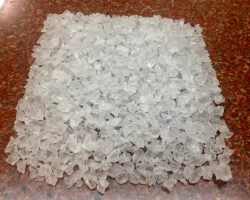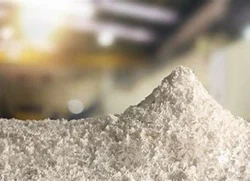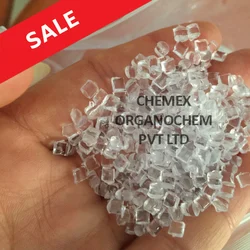Cellulose Acetate Butyrate
Synonym(s):AC303050;AC303075;Cellulose acetate butyrate
- CAS NO.:9004-36-8
- Empirical Formula: N/A
- Molecular Weight: 0
- MDL number: MFCD00081513
- EINECS: 618-381-2
- SAFETY DATA SHEET (SDS)
- Update Date: 2025-12-17 09:49:47
What is Cellulose Acetate Butyrate?
Chemical properties
white granular crystalline powder
The Uses of Cellulose Acetate Butyrate
Contact lens material (hydrophobic).
Cellulose acetate butyrate is the most commonly used organic cel- lulose ester for coating applications.
The Uses of Cellulose Acetate Butyrate
Generally, an increase in butyryl content increases flexibility, moisture resistance, solubility and compatibility with resins; as the butyryl content increases, hardness, tensile strength and heat resistance decrease. Cellulose acetate-butyrate injection mouldings are particularly tough and are used for such applications as tabulator keys and tool handles; film is employed as a puncture-resistant packaging material. Cellulose acetate-butyrate is also used in lacquers for such items as cables, fabrics and furniture and in melt and strip coatings.
Preparation
Cellulose acetate-butyrate (CAB) is prepared in a manner similar to that described previously for cellulose acetate. Esterification is carried out using a mixture of acetic anhydride and butyric anhydride with sulphuric acid as catalyst and then the product is slightly hydrolysed. Depending on the reaction conditions, various products may be obtained; commercial materials generally have about 1-2 butyryl groups per glucose residue.
Industrial uses
Commonly called butyrate or CAB, it is somewhattougher and has lower moisture absorptionand a higher softening point than acetate.CAB is made by the esterification of cellulosewith acetic acid and butyric acid in the presenseof a catalyst. It is particularly valuedfor coatings, insulating types, varnishes, andlacquers.
Special formulations with good weatheringcharacteristics plus transparency are used foroutdoor applications such as signs, light globes,and lawn sprinklers. Clear sheets of butyrateare available for vacuum-forming applications.Other typical uses include transparent dial covers,television screen shields, tool handles, andtypewriter keys. Extruded pipe is used for electricconduits, pneumatic tubing, and low-pressurewaste lines. Cellulose acetate butyrate alsois used for cable coverings and coatings. It ismore soluble than cellulose acetate and moremiscible with gums. It forms durable and flexiblefilms. A liquid cellulose acetate butyrate isused for glossy lacquers, chemical-resistantfabric coatings, and wire-screen windows. Ittransmits ultraviolet light without yellowing orhazing and is weather-resistant.
Properties of Cellulose Acetate Butyrate
| Melting point: | 127-240 °C |
| Density | 1.25 g/mL at 25 °C(lit.) |
| refractive index | n |
| storage temp. | 2-8°C |
| solubility | Practically insoluble in water, soluble in acetone, in formic acid and in a mixture of equal volumes of methanol and methylene chloride, practically insoluble in ethanol (96 per cent). |
| form | Granular Crystalline Powder |
| color | White |
| Dielectric constant | 3.2(Ambient) |
| EPA Substance Registry System | Cellulose acetate butyrate (9004-36-8) |
Safety information for Cellulose Acetate Butyrate
Computed Descriptors for Cellulose Acetate Butyrate
Cellulose Acetate Butyrate manufacturer
Chemex Organochem Private Limited
NRS Chemicals LLP
New Products
Indole Methyl Resin tert-butyl 9-methoxy-3-azaspiro[5.5]undecane-3-carboxylate Boc-His(Boc)-OH 2-CTC Resin 4-Chloro-7-tosy1-7Hpyrrolo[2,3-d]pyrimidine 5,7-Dibromo-1H-indole 2,5-dichloro-N-hydroxy-4,6-dimethylpyridine-3-carboximidamide 2,2-Dimethoxy-7-azaspiro[3.5]nonane hydrochloride 4-chloromethyl-5-methyl-1,3-dioxol-2-one (DMDO-Cl) R-2-BENZYLOXY PROPIONIC ACID 1,1’-CARBONYLDIIMIDAZOLE 1,1’-CARBONYLDI (1,2-4 TRIAZOLE) N-METHYL INDAZOLE-3-CARBOXYLIC ACID 4-((2-hydroxyethyl)thio)benzoic acid 1-(TERT-BUTOXYCARBONYL)-2-PYRROLIDINONE Methyl 6-methylnicotinate 3-Pyridineacrylic acid tert-Butyl carbazate TETRAHYDRO-2H-PYRAN-3-OL 2-((4-morpholinophenylamino) (methylthio) methylene) malononitrile 3-(4-morpholinophenylamino)-5-amino-1H-pyrazole-4-carbonitrile 2,4-dihydroxybenzaldehyde 1,3-Diethyl-1,3-Diphenylurea Methyl 2-methylquinoline-6-carboxylateRelated products of tetrahydrofuran








You may like
-
 Cellulose acetate butyrate CAS 9004-36-8View Details
Cellulose acetate butyrate CAS 9004-36-8View Details
9004-36-8 -
 Cellaburate CAS 9004-36-8View Details
Cellaburate CAS 9004-36-8View Details
9004-36-8 -
 Granules Cellulose Acetate Butyrate, For Industrial, Grade Standard: Technical GradeView Details
Granules Cellulose Acetate Butyrate, For Industrial, Grade Standard: Technical GradeView Details
9004-36-8 -
 Cellulose Acetate ButyrateView Details
Cellulose Acetate ButyrateView Details
9004-36-8 -
 Cellulose Acetate ButyrateView Details
Cellulose Acetate ButyrateView Details
9004-36-8 -
 Cellulose Acetate ButyrateView Details
Cellulose Acetate ButyrateView Details
9004-36-8 -
 98% Laboratory Grade Cellulose Acetate ButyrateView Details
98% Laboratory Grade Cellulose Acetate ButyrateView Details
9004-36-8 -
 Granules, Crystals Cellulose Acetate Butyrate, Grade Standard: Technical GradeView Details
Granules, Crystals Cellulose Acetate Butyrate, Grade Standard: Technical GradeView Details
9004-36-8
